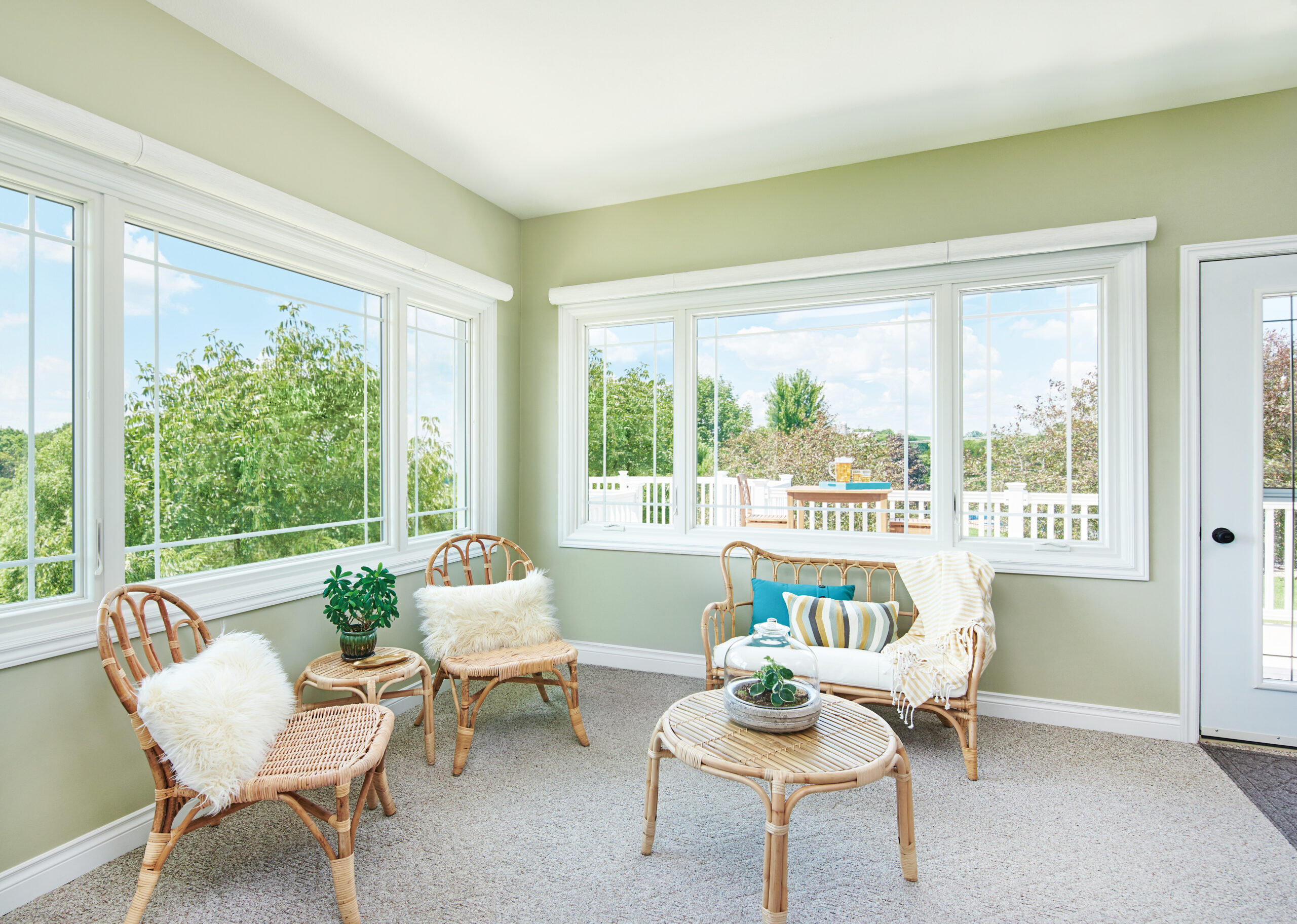When it comes to window design, the terms “muntins” and “mullions” are often used interchangeably, but they refer to very different components of a window. Understanding these differences can help you make better decisions about your new windows.
In this article, we explore the definitions, differences, history, and practical applications of window muntins and mullions.
What are Window Muntins?
Window muntins are the narrow strips of material that divide the glass panes within a window sash. Traditionally, these strips were made of wood and were essential in the construction of windows before the development of large glass panes. Muntins allowed for the creation of smaller, more manageable panes of glass which were then assembled to form a larger window.
Modern Uses
In contemporary window design, muntins are often decorative rather than structural. They create a classic, segmented appearance that can enhance the architectural style of a home. Modern muntins are usually made from materials like wood, vinyl, or metal. They can also be found in various configurations, including:
- True Divided Light (TDL): Individual panes of glass are separated by muntins.
- Grilles Between the Glass (GBG): Muntins are placed between two panes of glass, making cleaning much easier.
- Simulated Divided Light (SDL): Muntins are placed on both sides of a single pane of glass to mimic the traditional look.
What are Window Mullions?
Window mullions are vertical or horizontal bars that separate and support multiple window units within a larger window opening. Unlike muntins, which divide individual panes within a single window, mullions provide structural support between separate windows. Mullions are crucial in modern architecture, especially in buildings with large areas of glass. They provide the necessary structural integrity to support large windows and can be a key design element, offering visual breaks in the glass and contribute to the building’s overall aesthetic.
Types of Mullions
- Vertical Mullions: Separate and support window units vertically.
- Horizontal Mullions: Provide horizontal support and separation.
- Decorative Mullions: These can be used to enhance the visual appeal without necessarily providing structural support.
The History of Window Muntins & Mullions
The use of muntins date back to the 17th century when glass manufacturing techniques could only produce small panes of glass. Muntins were essential in creating larger windows by piecing together smaller panes. Mullions, on the other hand, have an even longer history as they were used in Gothic architecture to support the stonework in large windows of cathedrals and other significant buildings.
As glass production advanced over time, the need for structural muntins decreased. However, their aesthetic appeal remained. Mullions continued to play a crucial role in supporting large window structures, evolving from purely functional elements to significant architectural features.
Important Differences Between Muntins and Mullions
Functionality: Muntins divide individual panes of glass within a window, while mullions separate and support different window units.
Structure: Muntins are often decorative in modern windows, whereas mullions provide structural support.
Material: Both can be made from various materials, including wood, metal, and vinyl – but their use and installation methods differ.
Security: Mullions do not offer much protection in terms of home security. Though they are structurally stronger than muntins, they are located in between window units so breaking one of the windows makes it easy for intruders to enter. Alternatively, muntins offer a slight boost to security if the grilles stay in place once the glass is broken.
Looking for Beautiful and Energy-Efficient Windows?

More than just window replacement…
We are a leading window and door company with a wide selection of products to meet the needs of every home. Deciding between muntins and mullions windows can be difficult, but we’re here to answer any questions or concerns you may have.
When it comes to window replacement, Renewal by Andersen has got your back! We are not just window providers, we take care of the entire process – from the first in-home consultation all the way to installation day. For us, it’s more than just window replacement; it’s about enhancing the beauty and efficiency of your home through high-quality solutions.
We’re talking about high-quality solutions!
We understand that replacing windows is a significant investment, and our goal is to make the process as smooth and beneficial for you as possible. Our windows offer superior energy efficiency, reducing your heating and cooling costs while improving the comfort of your home all year-round. With various styles, materials, and finishes to choose from, we ensure that every homeowner finds their perfect match. Plus, our products are crafted with precision and designed to integrate seamlessly with your existing décor, providing both aesthetic appeal and functionality.
For those ready to embark on the journey of upgrading their home, Renewal by Andersen provides a free consultation process so you can discuss your specific needs and preferences. During this consultation, our experts will guide you through the various options, helping you understand the features and benefits before you make a decision.
If you’re considering window replacement, Renewal by Andersen has the expertise and expert-quality products to help transform your home for the better. For more information, give us a call or schedule your free consultation today!